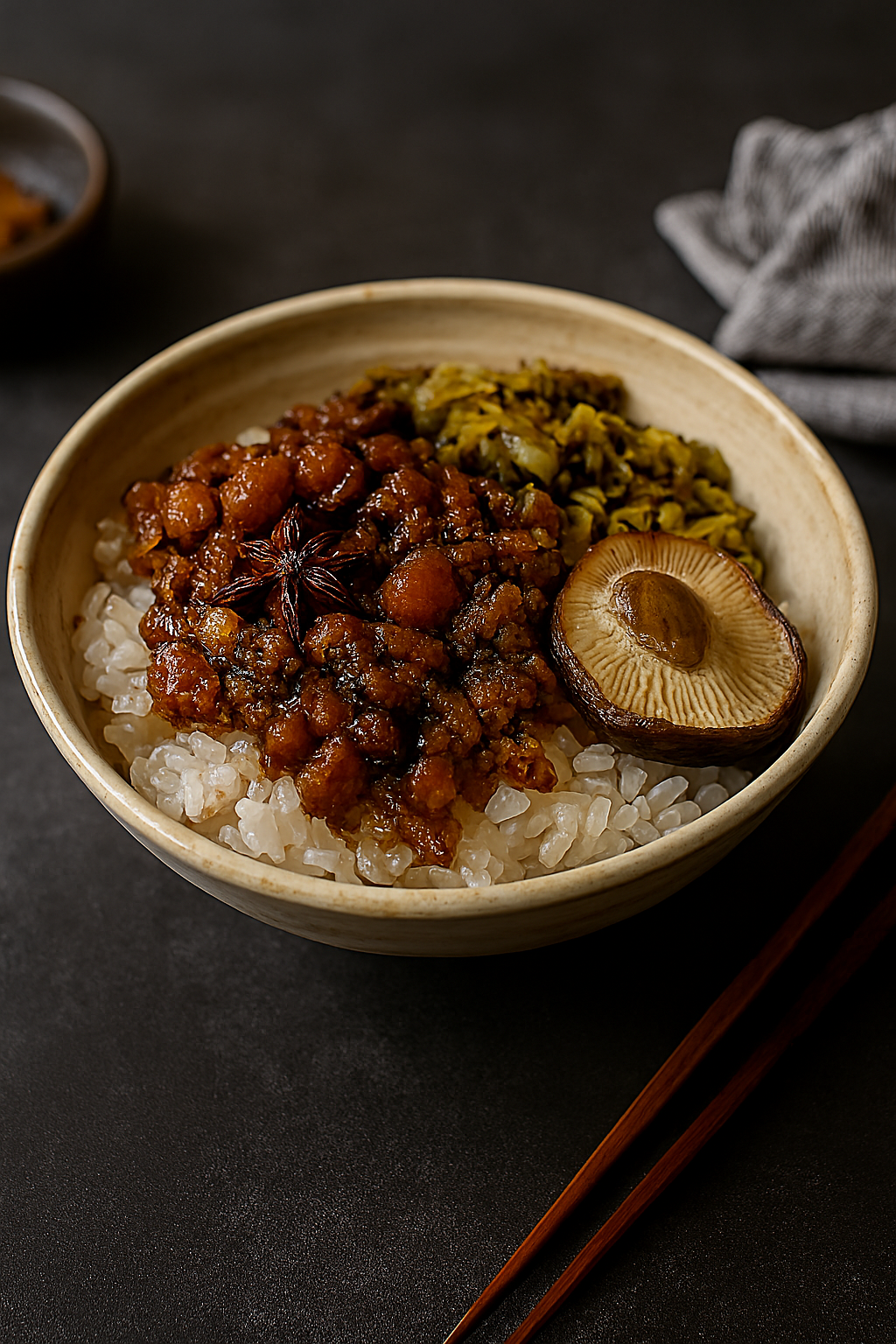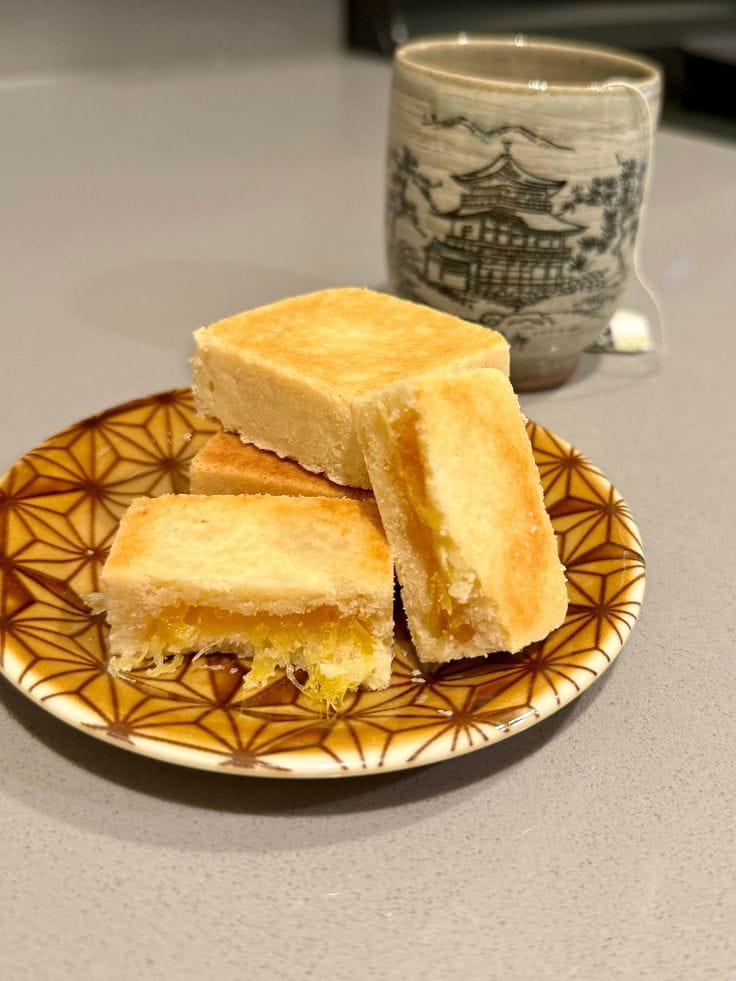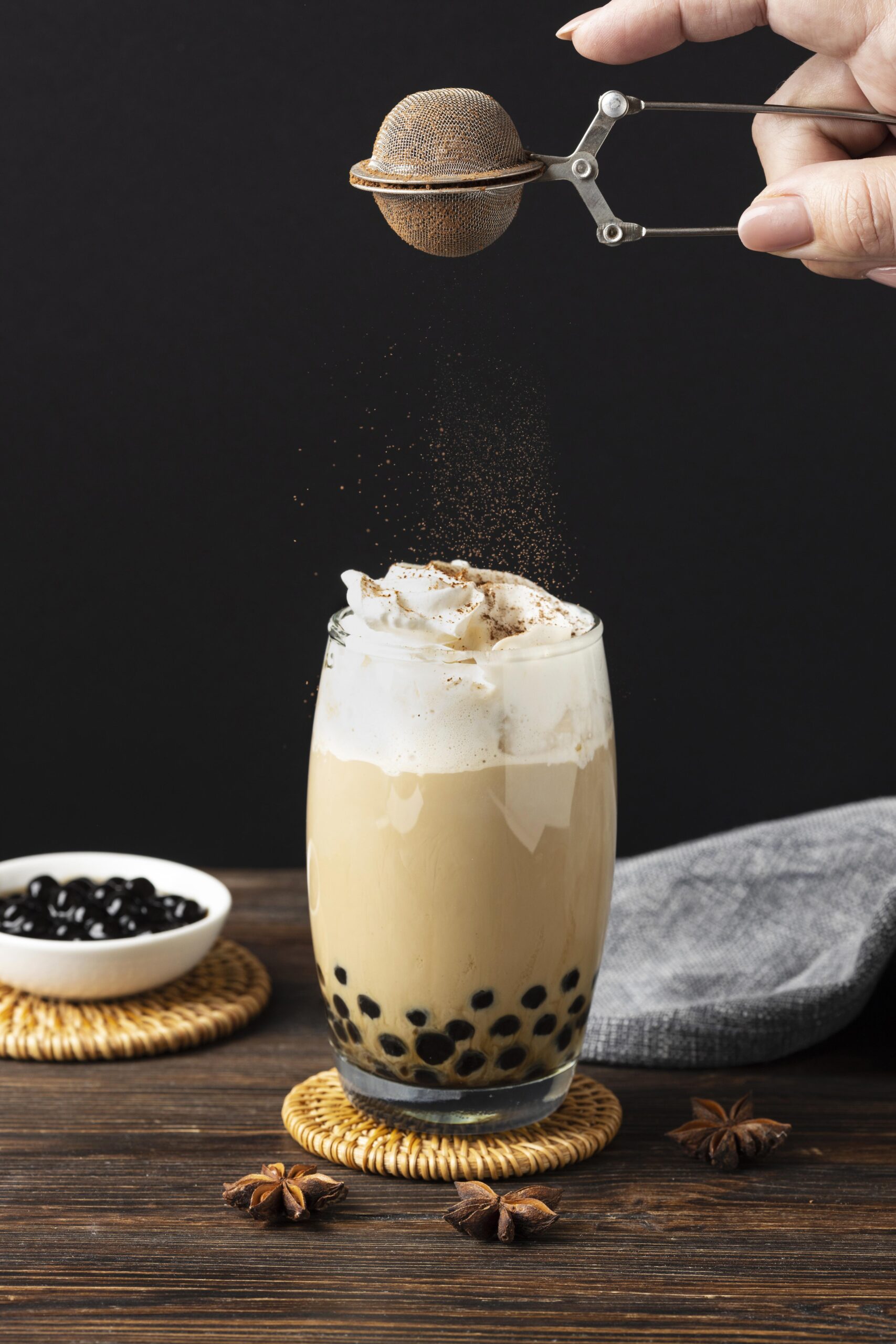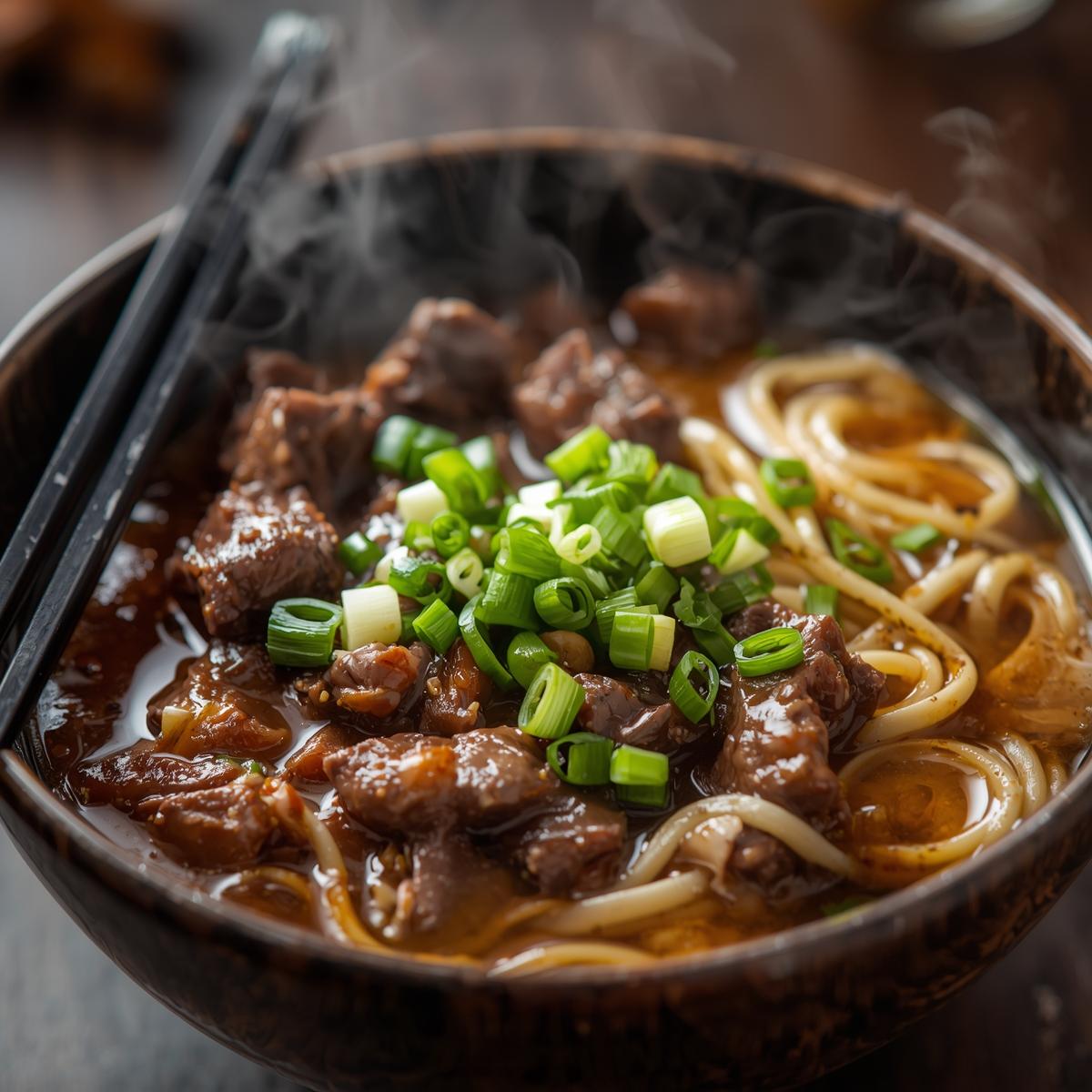
Discover the healing comfort of Lu Rou Fan recipe—Taiwan’s iconic braised pork rice bowl. A soulful dish that blends flavor, tradition, and wellness.
“Some meals don’t just feed the body—they whisper comfort to the soul.”
In the heart of Taiwan’s bustling night markets and quiet home kitchens, one dish stands out as the ultimate comfort food: Lu Rou Fan (滷肉飯). A bowl of warm rice topped with slow-braised minced pork, caramelized in soy, garlic, and spices—it’s Taiwan’s version of a hug in a bowl.
This dish isn’t just popular—it’s poetic. It speaks of heritage, healing, and the kind of nourishment that lingers long after the last bite.
🌏 The Soul of Taiwanese Cuisine
Taiwanese food is a fusion of:
- Fujian Chinese roots
- Japanese culinary influence
- Indigenous ingredients like taro and mountain greens
Lu Rou Fan reflects this blend beautifully—simple, soulful, and layered with flavor.
🧄 Healing in Every Spoon
Why does Lu Rou Fan belong in your Healing Foods category?
- Ginger & garlic – Anti-inflammatory and digestive
- Soy sauce – Mineral-rich and grounding
- Star anise & cinnamon – Warm spices that soothe the gut
- Slow cooking – Enhances nutrient absorption and emotional comfort
“In Taiwan, Lu Rou Fan is what you eat when you’re tired, homesick, or healing.”
🍚 Lu Rou Fan Recipe (Taiwanese Braised Pork Rice)
📝 Ingredients:
- 500g minced pork (or finely chopped pork belly)
- 1 tbsp sesame oil
- 4 garlic cloves, minced
- 1 thumb-sized ginger, sliced
- 2 tbsp soy sauce
- 1 tbsp dark soy sauce
- 1 tbsp rice wine or mirin
- 1 tsp sugar
- 1 star anise
- ½ tsp cinnamon
- 1 cup water
- Cooked jasmine or short-grain rice
- Optional: boiled egg, pickled mustard greens
👩🍳 Method:
- Heat sesame oil in a pan. Add garlic and ginger, sauté until fragrant.
- Add pork and cook until lightly browned.
- Stir in soy sauces, rice wine, sugar, star anise, cinnamon, and water.
- Simmer on low for 30–40 minutes until thick and glossy.
- Serve over rice with boiled egg and pickled greens.
🧘♀️ How to Eat It Mindfully
- Savor the aroma before the first bite
- Eat slowly, letting the warmth settle in
- Pair with tea for digestion
- Reflect on comfort—this dish is a reminder that healing can be delicious.
Where to Find Authentic Lu Rou Fan in India
Taiwanese cuisine may be rooted in island tradition, but its flavors are finding a home in India too. If you’re craving the real taste of Lu Rou Fan or want to recreate it with authentic ingredients, here’s where to begin:
🍽️ Restaurants & Pop-Ups
While Taiwanese restaurants are rare in India, you can explore:
- Asian fusion cafés in Delhi, Mumbai, and Bangalore that offer bao, noodle bowls, and soy-braised dishes
- Pan-Asian food festivals often feature Taiwanese street food stalls
- Pop-ups and supper clubs hosted by Asian expat communities—follow Instagram hashtags like #TaiwanInIndia or #AsianFoodDelhi
🛒 Ingredient Sourcing
To cook Lu Rou Fan at home with authentic flavor:
- Minced pork belly or shoulder – Available at online meat stores like Licious or FreshToHome
- Soy sauces (light & dark) – Brands like Lee Kum Kee or Kikkoman from Amazon or Nature’s Basket
- Star anise, cinnamon, rice wine – Found at INA Market (Delhi), Crawford Market (Mumbai), or online Asian grocers
- Pickled mustard greens – Try specialty stores like The Asian Pantry or make your own with Indian mustard leaves
📖 Online Recipes from Taiwanese Chefs
For deeper authenticity, explore:
- Barrier Free Cooking’s Lu Rou Fan – A soulful take with shallots and rice wine
- Taste Asian Food – A detailed guide with tofu and egg pairing
- Go With Life – Cultural insights and recipe variations
“Even across oceans, comfort food finds its way home.”
🧬 Ayurvedic Lens on Lu Rou Fan
While Taiwanese in origin, this dish aligns beautifully with Ayurvedic principles:
- Ginger & garlic stimulate Agni (digestive fire)
- Star anise & cinnamon balance Vata and Kapha
- Slow cooking enhances Ojas (vital energy)
“Comfort food transcends borders—healing is universal.”
🧒 Lu Rou Fan for Kids & Elders
Tips to adapt the dish for different age groups:
- For toddlers: Reduce spice, add ghee, serve with soft rice
- For elders: Use garlic and cinnamon for digestion, serve warm with steamed veggies
🧂 Ingredient Spotlight: Star Anise
A key spice in Lu Rou Fan with healing properties:
- Aids digestion
- Relieves bloating
- Adds warmth and depth to the dish
🧪 Nutritional Breakdown (Per Serving)
Approximate values for one bowl:
- Calories: 380
- Protein: 18g
- Iron: 15% RDA
- Healthy fats from sesame oil
- Antioxidants from spices
🛒 Ingredient Sourcing Tips
Where to find authentic ingredients in India:
- Minced pork or chicken from local butchers or online meat stores
- Star anise, cinnamon, soy sauce from Asian grocery stores or Amazon
- Pickled mustard greens from specialty Asian shops or homemade
📖 Cultural Significance of Lu Rou Fan
- Served during family gatherings and festivals
- Symbol of homecoming and comfort
- Often the first dish students crave when returning from abroad
🧳 Taiwanese Street Food Culture: Where Lu Rou Fan Lives
In Taiwan, Lu Rou Fan isn’t just a home-cooked dish—it’s a street food staple.
- Found in night markets like Shilin and Raohe, served in steaming bowls
- Often paired with bubble tea, pickled veggies, or clear soups
- Vendors simmer pork for hours, creating a broth that’s both rich and restorative
“In the alleys of Taipei, comfort simmers quietly in every pot.”
🥬 Vegetarian Twist: Lu Rou Fan with Mushrooms
For plant-based readers, here’s a soulful alternative:
- Replace pork with shiitake mushrooms, jackfruit, or tempeh
- Braise in soy sauce, garlic, ginger, and star anise
- Serve over millet or brown rice for added gut health
“Healing isn’t just in tradition—it’s in adaptation.”
🧘♀️ Food as Therapy: Why Braised Dishes Heal
Slow-cooked meals like Lu Rou Fan offer emotional and physical healing:
- Warmth soothes anxiety and fatigue
- Spices like cinnamon and star anise calm digestion
- Rice grounds the body and stabilizes energy
This dish is ideal for:
- Post-travel recovery
- Menstrual comfort meals
- Emotional reset days
🧂 Spice Profile: What Makes Lu Rou Fan Unique
Let’s decode the flavor layers:
- Star anise – Sweet, licorice-like warmth
- Cinnamon – Earthy and grounding
- Soy sauce – Umami depth and mineral richness
- Ginger & garlic – Digestive and anti-inflammatory
Each spice is chosen not just for taste—but for its healing properties.
🧾 Taiwanese Pantry Essentials
Want to explore more Taiwanese recipes? Stock your pantry with:
- Light & dark soy sauce
- Rice wine or mirin
- Pickled mustard greens
- Star anise, cinnamon sticks
- Jasmine rice or sticky rice
- Sesame oil
These staples open the door to dishes like:
- Three Cup Chicken
- Beef Noodle Soup
- Gua Bao (Taiwanese buns)
📚 Food Memory: My First Bowl of Lu Rou Fan
You can personalize this section with a short story or imagined experience:
“I remember the first time I tasted Lu Rou Fan—it was like meeting an old friend in a new country. The warmth, the depth, the quiet comfort. It reminded me of my grandmother’s khichdi, but with soy and spice.”
📬 Stay Connected with @biteswithdivuu
Love soulful recipes like this? Follow us for more healing bowls, millet fusions, and food stories that nourish body and spirit.
- 💌 Subscribe for weekly wellness recipes
- 📸 Follow @biteswithdivuu on Instagram
- 💬 Comment below: What’s your comfort food ritual?
“Food is not just fuel—it’s connection, culture, and creativity.”
- “Have you tried Lu Rou Fan before? Share your twist in the comments!”
- “Tag @biteswithdivuu with your Taiwanese comfort bowls!”



